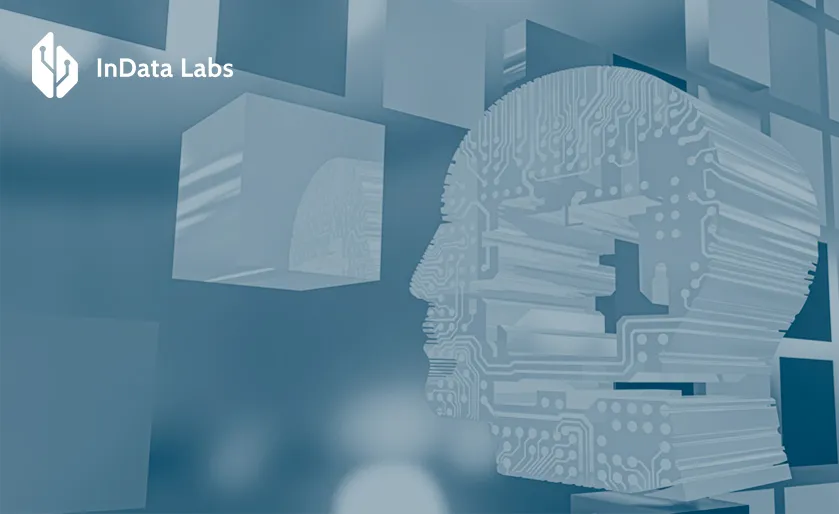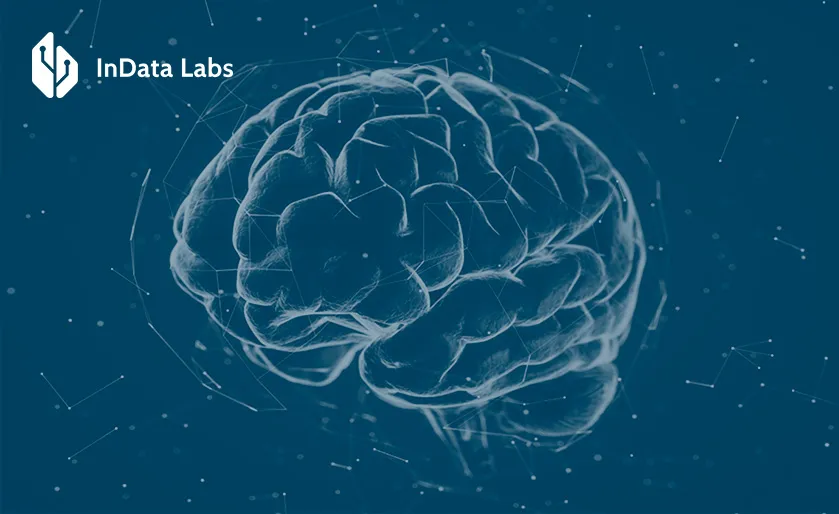As technology rapidly advances, so too does the field of artificial intelligence. Things that a decade or two ago were considered science-fiction, today are a part of our digitized reality. Hence, in this article, we present our favorite picks of artificial intelligence project ideas for 2025 and beyond. From simple applications to more complex, advanced ones, they all are valuable solutions that can be used in a variety of software products. Check them out to get inspired!
What is trending in AI right now?
Before we begin, let’s start with the current state of the industry. There is no doubt that artificial intelligence is one of the hottest topics within the tech world right now. From consumer products (like voice assistants) to cutting-edge developments in robotics, AI becomes an integral part of our daily lives.
What’s actually behind all the hype? To answer that, we have to take a closer look at the current tendencies that dominated this sector. One of them is increased accessibility – simply put, AI for all. Thanks to advances in machine learning and other algorithms, even small businesses and individuals can now harness the power of artificial intelligence and use it to make their professional and private lives easier.

What other trends you should pay attention to?
- Virtual assistants – these digital helpers can perform a variety of tasks, like booking appointments, ordering groceries, and managing schedules. They get much better at understanding and responding to natural language. In the near future, they’re only going to get more useful, so it’s definitely worth keeping an eye on this trend.
- Automated customer support – the most frustrating thing about dealing with customer support is having to wait on hold for an agent. With AI, that problem becomes history. Automated chatbots, voice bots, and other similar solutions can mimic human conversation and solve problems so well that they can replace employees. No worries, they won’t lose their jobs – they will be delegated to more meaningful tasks.
- Self-driving cars – definitely one of the most talked-about applications of AI is in this area of the technological sector. Several companies, including Tesla, Google, and Uber, are working on this technology, and it’s slowly becoming a reality. Despite problems experienced during the development phase, including hundreds of failures, we are closer than ever to fully automate the driving process.

Source: Unsplash
- Machine learning – it’s a type of AI algorithm that is concerned with teaching computers to learn from data. This technology is being used for a variety of tasks, such as identifying objects in images and understanding natural language. The growth of this area of artificial intelligence is crucial for many solutions mentioned here, that’s why we believe it will be constantly improved and invested in.
- Robotics – another area where AI is being used. Robots that are worked on at the moment can help with physical tasks like welding, manufacturing, and assembling, but not only. The area called nanorobotics uses the power of artificial intelligence to transform engineering, medicine, and other industries.

Source: Unsplash
Generative AI is a transformative branch of artificial intelligence that empowers computers to generate content. Hence comes its name, ‘generative’. It’s applied in various domains, from art and language generation to personalization and healthcare. By leveraging deep learning techniques, generative AI can produce creative outputs resembling human-created data.
In art and design, it creates artworks and music compositions, blurring the line between human and machine creativity. In natural language generation, models like GPT-4 generate human-like text for content creation and chatbots. Generative adversarial networks (GANs) excel in generating lifelike images and videos, from avatars to medical imaging enhancements.
Is Google AI?
There’s no question that Google is one of the most powerful companies in the world when it comes to technology. But is it also a leading player in the field of artificial intelligence? Many experts believe that indeed it is. After all, the company has access to massive amounts of data and has been investing heavily in AI in recent years. In 2011, it even created its own AI research division, Google Brain.
That said, some experts believe that Google is still playing catch-up when it comes to AI. They point to the fact that many other companies, including META (Facebook), Amazon, Nvidia, IBM, and more have been working in the field for much longer and with many successes.
What’s important here is that the search engine operates on machine learning algorithms to deliver more personalized and precise results. The same goes for the Chrome browser, where AI is used for detecting malicious sites and helping users with granting permissions. So we could say that Google on its own is not AI, but it utilizes artificial intelligence to deliver more user-centric services and revolutionize the way we use technology.
What are the 5 big ideas of AI?
To understand better how AI should be developed and used, five big ideas were established. It’s a set of rules and guidelines that suggest the traits of a perfect artificial intelligence solution. Also, let’s take ChatGPT as an example to see how those 5 big ideas were implemented in the most well-known AI model by OpenAI. Here’s what they say:
Perception
Computers perceive the world using sensors. Extracting meaning from sensory signals is something already achieved by many creators of AI projects. The machines can “see”, “hear”, or even “smell” similarly to humans, which is crucial for them to serve their purposes.
ChatGPT’s perception refers to its ability to understand and interpret the input it receives from users. This encompasses comprehending the meaning, context, and intent behind the text-based queries or prompts it is given. Through its training on vast amounts of text data, ChatGPT has learned to perceive the nuances of human language, allowing it to provide relevant and contextually appropriate responses. Its perception capabilities enable it to engage in meaningful interactions by recognizing patterns, references, and conversational flow.

Source: Unsplash
Representation & reasoning
Agents maintain the representations of the world and use them for reasoning. Computers use data science to construct representations of certain phenomena and use that for reasoning. They can solve even complex problems, but they can think in abstract ways like humans.
ChatGPT represents information through numerical vectors and uses contextual understanding to generate coherent responses. It performs reasoning based on patterns in its training data but doesn’t possess true deductive reasoning. Its knowledge is limited to what it learned during training, with a specific cutoff date for information.
Learning
Computers can learn from data. To work right, algorithms need a considerable amount of data to learn from it. Machine learning allows computers to improve their perception of the world, but usually, humans need to deliver the information to start the process.
ChatGPT learns by analyzing a massive dataset of text from the internet. It predicts the next word in sentences and adjusts its internal parameters to minimize prediction errors. Through this process, it learns patterns, grammar, vocabulary, and common sense from the training data. However, it doesn’t possess true understanding or consciousness and is limited to the knowledge present in its training data.

Source: Unsplash
Natural interaction
Intelligent agents require many kinds of knowledge to interact naturally with humans. To make interactions human-like, AI has to learn how to speak our languages, understand emotions, recognize facial expressions, etc. It can do that to some extent, making it natural will take some time and require a lot of knowledge to be provided to it.
ChatGPT excels at natural interaction, mimicking human-like conversation. It engages in dialogue with users, understands context, and responds in a way that feels conversational and fluid. It can answer questions, provide explanations, and engage in discussions on various topics, making interactions with it feel intuitive and human-like. Its ability to process and generate text in a manner that mirrors the nuances of human conversation sets it apart as a versatile tool for natural language interactions across a wide range of applications.
Societal impact
AI can impact society in both positive and negative ways. Approaching artificial intelligence the right way can help eliminate potential problems that can occur due to its development. For example, it has to be provided with the right sets of data to deliver positive results.
ChatGPT integration societal impact is multifaceted. On one hand, it has the potential to significantly enhance productivity and accessibility in various industries, from customer service to content creation. It can democratize information and provide support to a global audience, improving access to knowledge and services.
However, there are concerns about misuse, including the generation of misleading or harmful content and the ethical implications of automated interactions. Ensuring responsible development, guidelines, and safeguards are essential to harness its benefits while mitigating potential risks, emphasizing the need for ongoing research and governance to navigate its societal impact effectively.
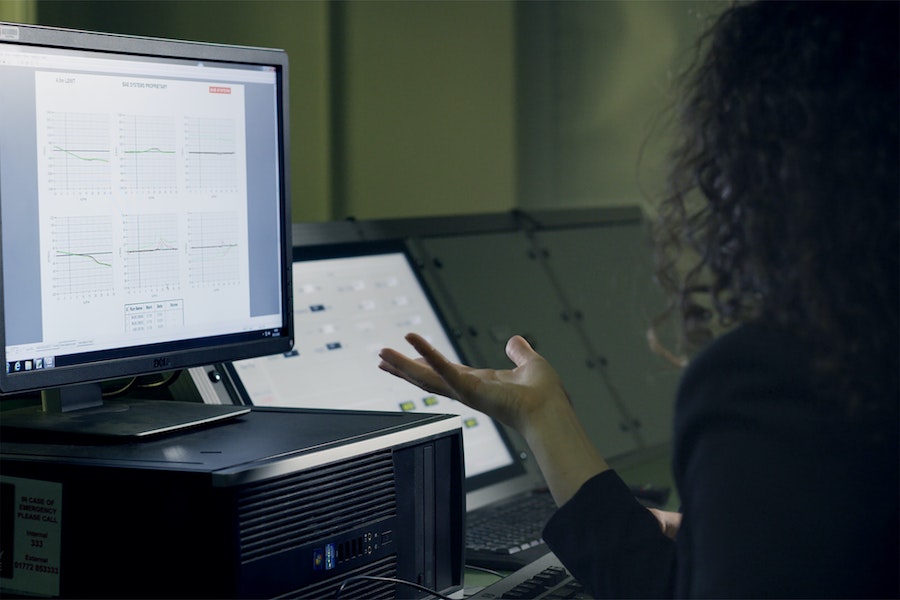
Source: Unsplash
What is the most advanced AI?
There is no single answer to this question as it depends on what is meant by advanced AI. If referring to AI technologies that are currently the most advanced, then this would probably mean deep learning, the subcategory of machine learning solutions that uses artificial neural networks in various AI-related activities. It’s a layered methodology that is considered to be quite powerful thanks to its contribution in many areas, including medicine, science, linguistics, and software development.
When it comes to the most advanced AI in terms of general intelligence, then this is a much more difficult question to answer. Here, there are many ways of measuring advancement. Some people might say that the most advanced AI is the one that is closest to human-level intelligence. Others might say that the most advanced AI is the one that can perform the widest range of tasks or the one that has the largest capacity for learning.
In this context, the name that often surfaces prominently is ChatGPT. ChatGPT is a widely-known AI tool that uses a powerful natural language generation model to create engaging and informative conversations.
Additionally, OpenAI has also introduced ChatGPT API. The API can be used to integrate ChatGPT’s models, including chat-based models, into their applications, products, or services. These chat-based models can be used for tasks like creating conversational agents, chatbots, language translation, text generation, and more.
In the context of modern business strategies, chatbots powered by advanced AI technologies like ChatGPT are taking center stage. Such chatbots enable efficient customer service operations by providing prompt responses to queries, ensuring 24/7 availability, and minimizing the workload on human customer support agents. Chatbots also contribute to personalized customer experiences, as they can analyze user data and preferences to tailor their interactions accordingly.
The projects we present in this article have various levels of advancement, but there’s no doubt they are incredible in terms of their capabilities. We believe that instead of analyzing what the most advanced AI can do, we should take what’s best from this technology and use it for the greater good.

Source: Unsplash
What can the best AI do today?
There isn’t one thing that we could say is the best trait of AI in today’s world. There are so many solutions on the market and even more developed, that calling one of them the best would be relative. AI is already being used in a number of ways, such as:
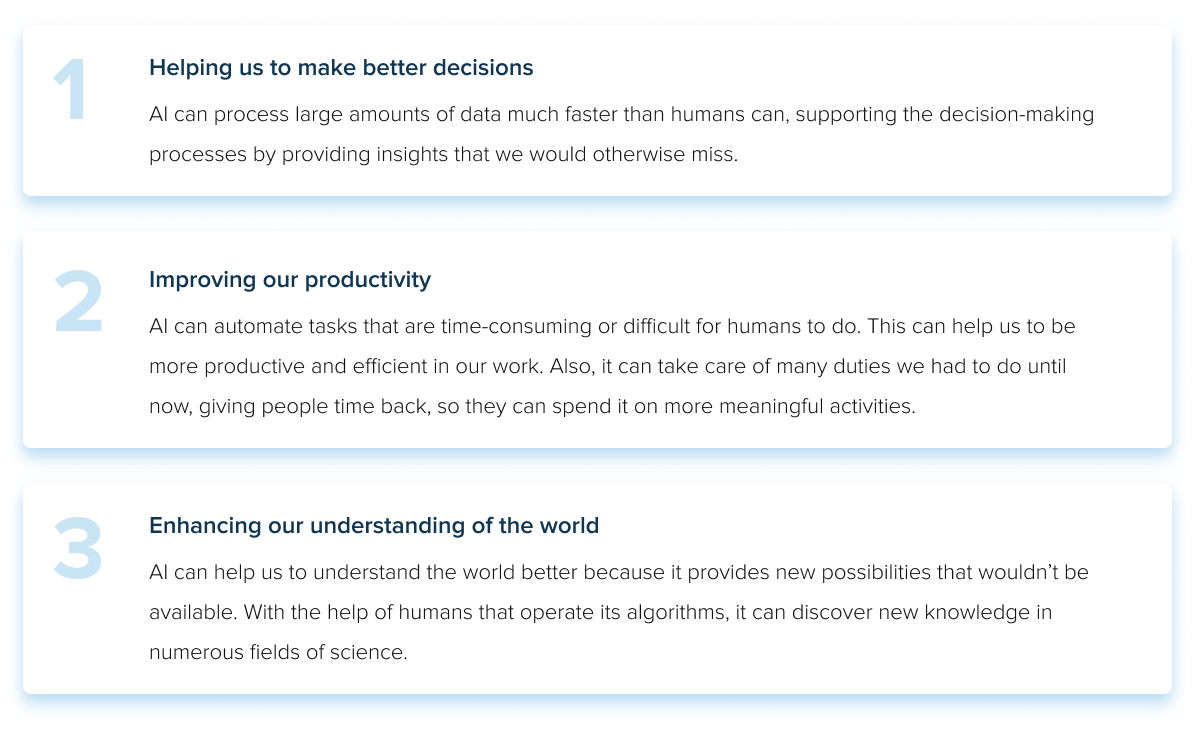
If the fact that artificial intelligence can make our lives easier, better, and less overloaded with work and mundane chores doesn’t make it one of the best technological accomplishments, then we don’t know what could. According to specialists in the field, the possibilities of AI are endless, so we can only embrace what it will bring next.
What is the most impressive thing AI can do?
Artificial intelligence can mimic many human-like behaviors, from talking to driving cars, translating multiple languages, and detecting cancer.
AI offers benefits to individuals, companies, and humankind alike. It can not only help people achieve goals, make more money, or find a more comfortable way of doing everyday assignments. It can also contribute to society and support its fight against issues we experience in the 21st century.
Examples? Here you go:
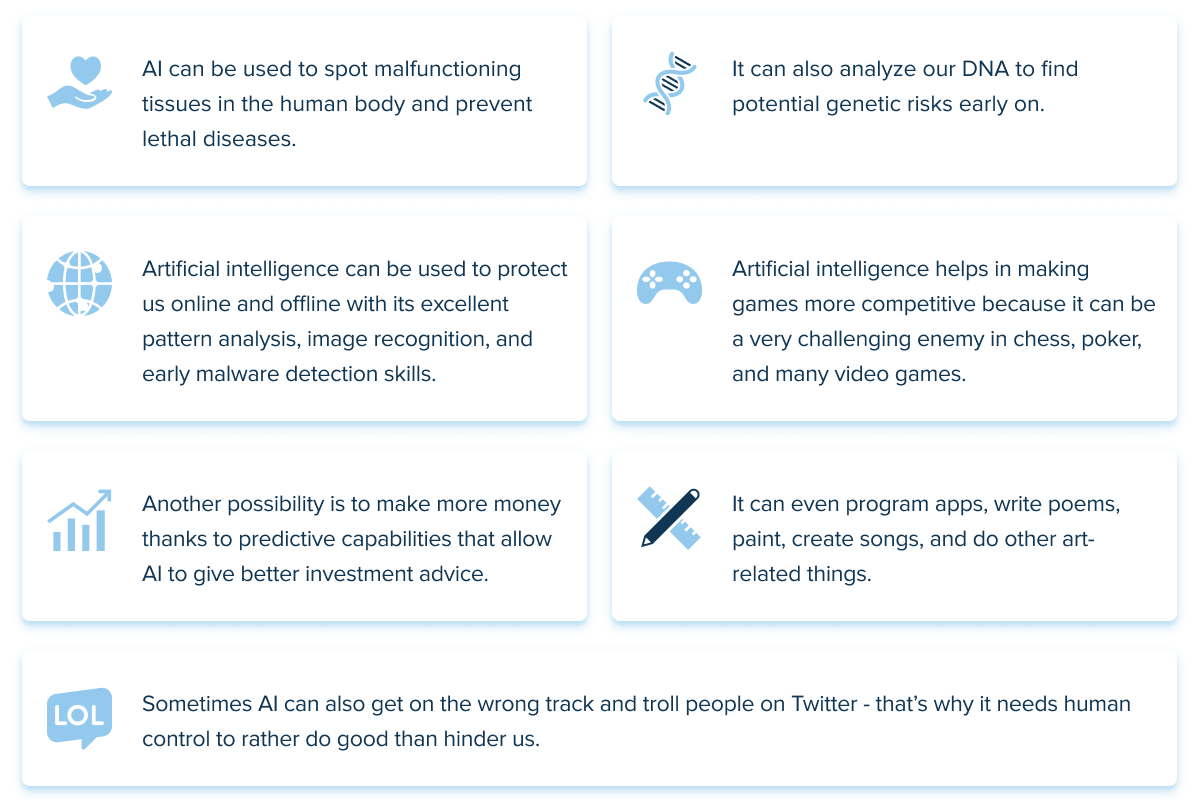
30 artificial intelligence project ideas for 2025
Now let’s dive deeper. This article is dedicated to providing information on the most promising artificial intelligence project ideas. We want to showcase the ones that we believe are interesting, thought-provoking, and future-proof.
To make things easier, we’ve categorized the projects from the most beginner-friendly to the most complex, sophisticated ones and added links to their source codes or useful Python libraries. If you want to work with AI or implement it in your software solution, the division we used will help you navigate through our proposals and pick the one that is most appropriate for your needs.
What are some good AI projects for beginners?
There are many AI project ideas for beginners that can help you learn AI and its basics. One of the most popular ideas is to build a simple chatbot. You can also create a machine learning model that will recognize handwritten digits, which requires more complex work but can help you understand better how sophisticated algorithms work. Here are other projects to try:
Writing tools
Simple artificial intelligence projects can be a great support for people working with words.

Source: Unsplash
AI projects to make the digital realm a better place
Basic AI algorithms can also help in achieving a higher level of transparency in the online world. Moreover, they can support marketers in delivering more personalized experiences to their customers.
Animal recognition
Many beginner-friendly AI projects focus on animals, which is a great start before diving deeper into the human-related analysis.
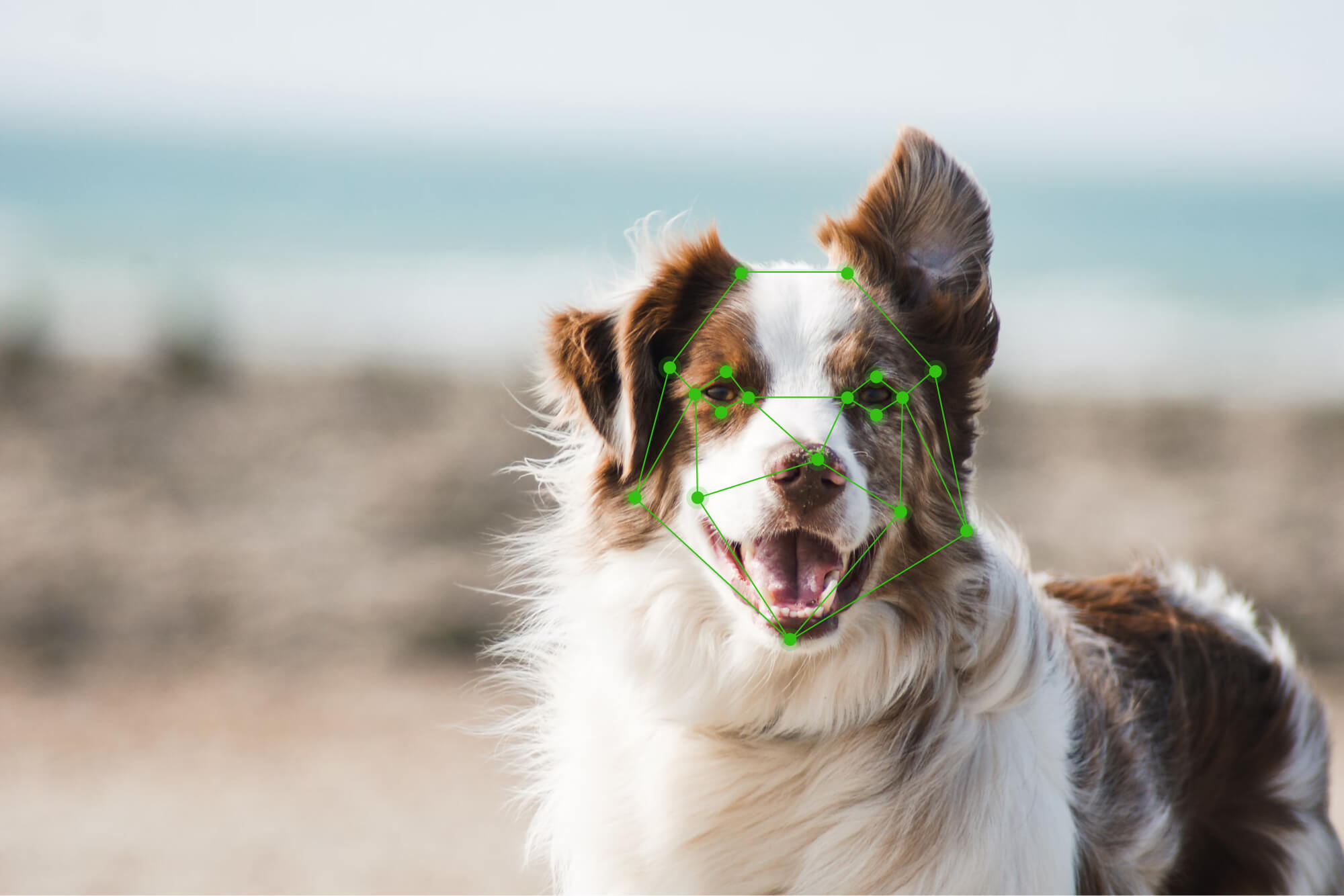
Image processing
AI image processing is a simple AI project aimed at analyzing and manipulating digital images. AI image processing can perform tasks such as object detection, face recognition, image enhancement, image segmentation, image synthesis, and more. AI image processing can be used for various easy AI projects:
- Image classification
- Object detection
- Image generation.
What are some intermediate AI projects?
Numerous AI projects could be considered intermediate. These usually involve various methodologies and algorithms. For example, natural language processing can be used to create more advanced chatbots or to automatically generate summaries of text.
Computer vision is used for systems that can identify objects in images or video. Predictive modeling is usually utilized to predict future events based on particular sets of data. What exactly can be made on this level?
The future of HR
There are several ways to help recruiters find the right candidates with the help of AI. The algorithm scans through resumes and based on the found information predicts if the potential employee will suit the organization.

Source: Unsplash
Healthcare support
Even at the intermediate level, one can create AI-based software that has the potential to save someone’s life.

Source: Unsplash
Analyzing faces – even during a pandemic
Thanks to identification algorithms our lives become easier. That’s why so many organizations (including schools) have a face recognition app in place. Since our faces have quite unique features, such a project doesn’t require large amounts of data – hence its placement in the intermediate category.
As for masks, automatically detecting people who don’t wear them while it’s recommended is the easiest way to solve this problem.
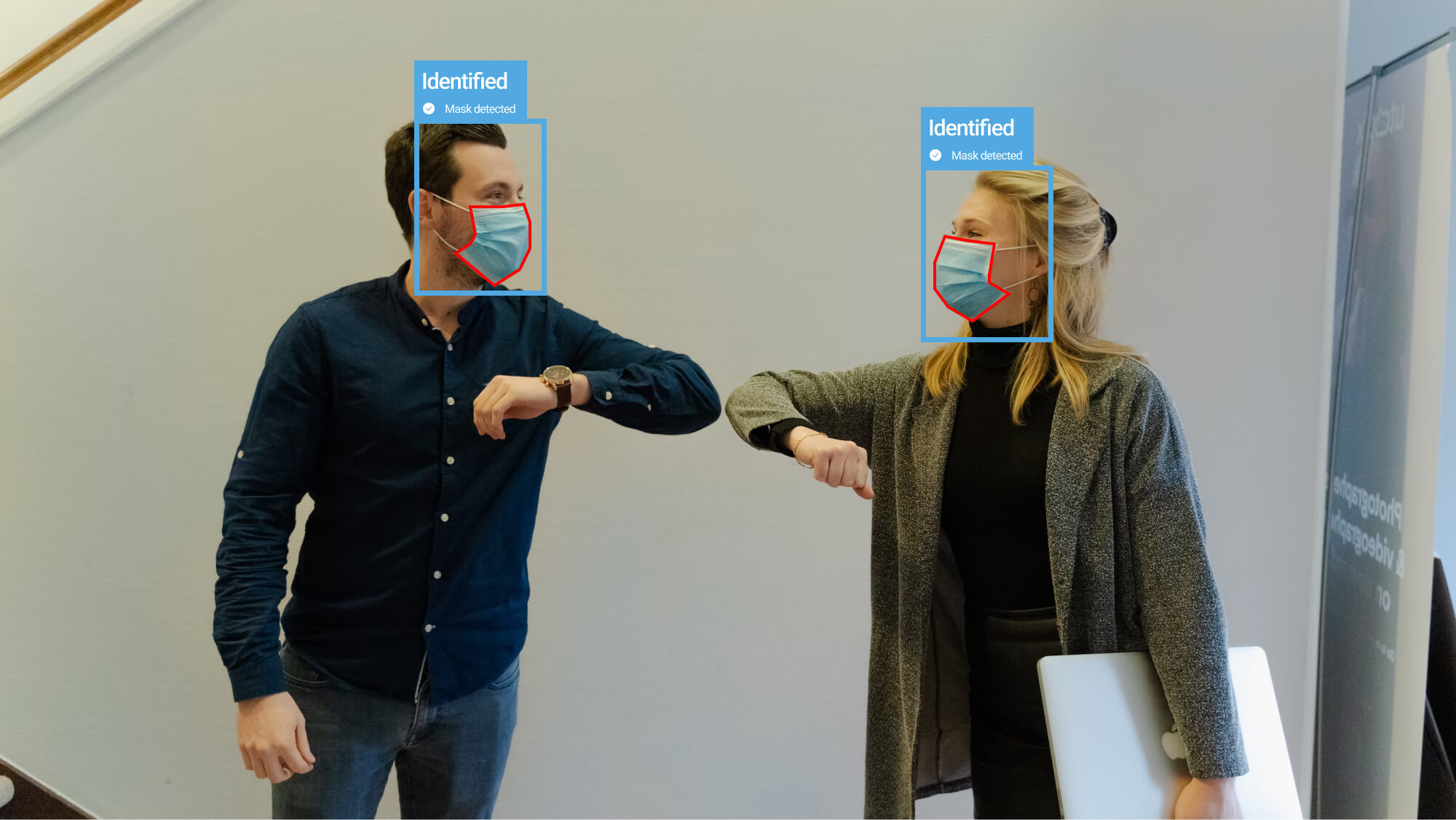
Predictions of all sorts
AI tools that offer predictions are particularly appreciated because they can support users in achieving their goals, both individual and professional.
Advanced customer service
One of the prominent AI use cases is customer support. OpenAI has also introduced a dedicated chatbot platform called GPT-4, designed to fulfill this very purpose.
ChatGPT is a worthwhile tool for enhancing customer support with 24/7 availability, rapid responses, and multilingual support. InData Labs integrated the ChatGPT prompt engineering to create the website’s virtual assistant. Leveraging deep learning algorithms and extensive datasets to provide InData Labs’ website visitors with support for inquiries regarding the company’s services and expertise. It also facilitates the scheduling of calls with sales representatives based on location.
The solution can be customized according to other organizations’ specifications and requirements. Thanks to such a virtual assistant, businesses can not only offer effective assistance to their customers but also facilitate cost reduction, shorter wait times, streamlined call arrangements, and lead generation automation.
However, there’s one thing to be noted. After implementing AI solutions, organizations must monitor and maintain the AI system to ensure it provides accurate and appropriate responses, especially in cases involving sensitive customer information or complex problem-solving.
What are some advanced AI projects?
AI project ideas that could be undertaken in order to develop the technology further or deliver a solution that we haven’t yet seen fall into the advanced category. Some of them are almost unbelievable and associated with books or movies, but can definitely become reality sooner than later.
All of them have one thing in common – their goal is to improve our lives in the near future. Some possible advanced projects include:
Age-related tools
Predicting how you will look in 30 years’ time can be done just for fun. However, setting up such an algorithm can be tricky. As for age detection, it can be crucial for children’s safety in the online space.

Source: Unsplash
On the road
When we finally get cars with safe autonomy, it will revolutionize the way we travel. Even before that, traffic prediction will come in handy.
AI as a part of our daily lives
Creating an artificial intelligence app that will act similarly to human beings is not an easy task. It can be utilized to support us or to provide entertainment.

Source: Unsplash
Images done better
Algorithms that work with images require a lot of work and advancement. Colorization is a great way to bring old movies and photographs back to life. Caption generation could improve internet accessibility for the visually impaired because they use tools that read what’s on the screen for them.
Why do AI projects fail?
We hope you liked our list. Now, let’s talk about the best practices when working on artificial intelligence projects. One of the main reasons why AI projects fail is a lack of understanding of what the algorithms can and can’t do. This technology is often overhyped and people have unrealistic expectations of what it can achieve. This can lead to disappointment and a feeling that the AI project has failed.
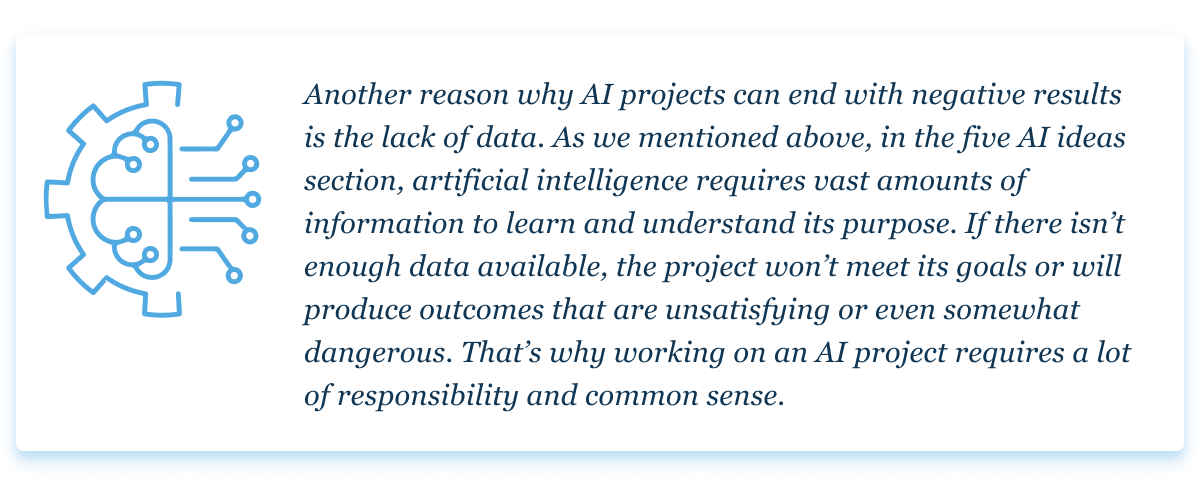
Last but not least, AI projects can fail due to the lack of resources. Artificial intelligence is a resource-intensive technology. Working on it can be time-consuming, expensive, and require many specialists to be involved.
Without the right budget, well-estimated time-to-market, as well as a realistic and flexible AI strategy in place, it might be difficult to finish the project.
Being aware of all these obstacles can help you avoid and conquer them while working on your next AI product.
What are some future AI projects?
There is no doubt that the AI field is rapidly evolving. It becomes more advanced every day. With this growth, businesses and organizations are beginning to explore its potential applications in a variety of settings and industries.
The future of artificial intelligence seems bright because people want to invest in its expansion to achieve a plethora of goals.

Source: Unsplash
There are many potential directions AI development can follow in the years to come. It’s hard to predict what exactly the future will hold. But one thing is for sure – AI is going to continue to revolutionize the world as we know it.
Here are some potential artificial intelligence project ideas that might become our reality anytime soon:
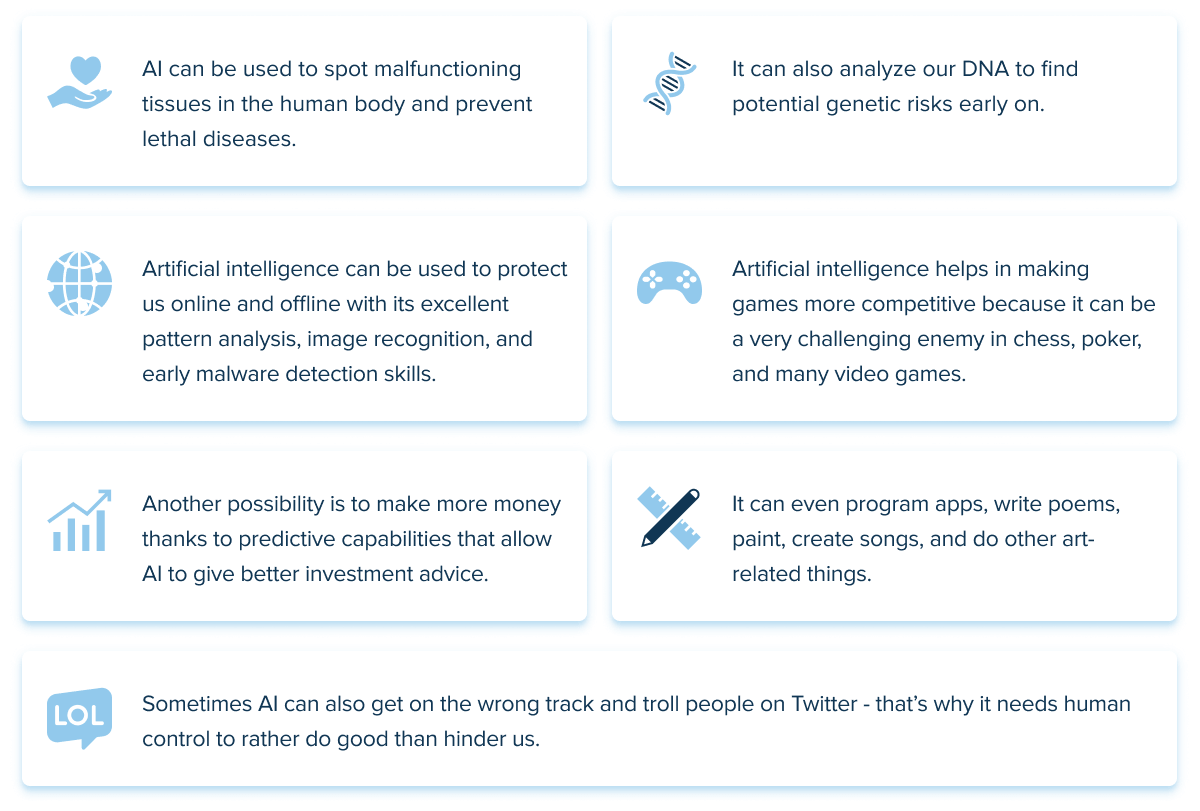
As you can see, even though AI is present in many areas of our lives already, there’s still a lot of space for expansion. Do you wonder if you can start your AI journey in 2025? The answer is definitely yes!
How do I start my own AI project?
There are many ways to get started with your AI project, but it can be tough to know where to begin. We have a few tips to help you kick-start your work and plan the required resources.
Step one – find the focus
First, you need to choose the main focus of your project. What problem do you want to solve with AI? Once you have a clear idea of your goals, you can begin researching AI algorithms and approaches that could help you achieve them.
Step two – build a team
Next, you need to assemble a team (you might want to hire specific specialists that know particular algorithms) and create a space for your project to be worked on. That doesn’t mean renting an office, but having a straightforward plan and all communication means in place is essential to productively and effectively build such a complicated solution.

Source: Unsplash
Step three – collect data
Perhaps the most important step in any AI project is data collection. The quality of it will determine the quality of the results you will get. Make sure to collect enough data to train your AI model. Pay attention to its correctness and diversity. It’s better to spend more time at this stage than provide poor quality data that will compromise your AI’s delivery.
Step four – train and evaluate
The final step is training and evaluating the AI model. It can be a long process, but it’s important to make sure your AI is working as intended before deploying it. Especially the testing phase is critical because it can showcase mistakes and anomalies early on, helping your team get rid of them.
Also, remember to document your progress and results, so you can share your work with others. Maybe you will discover something that will change the course of AI-related research.

